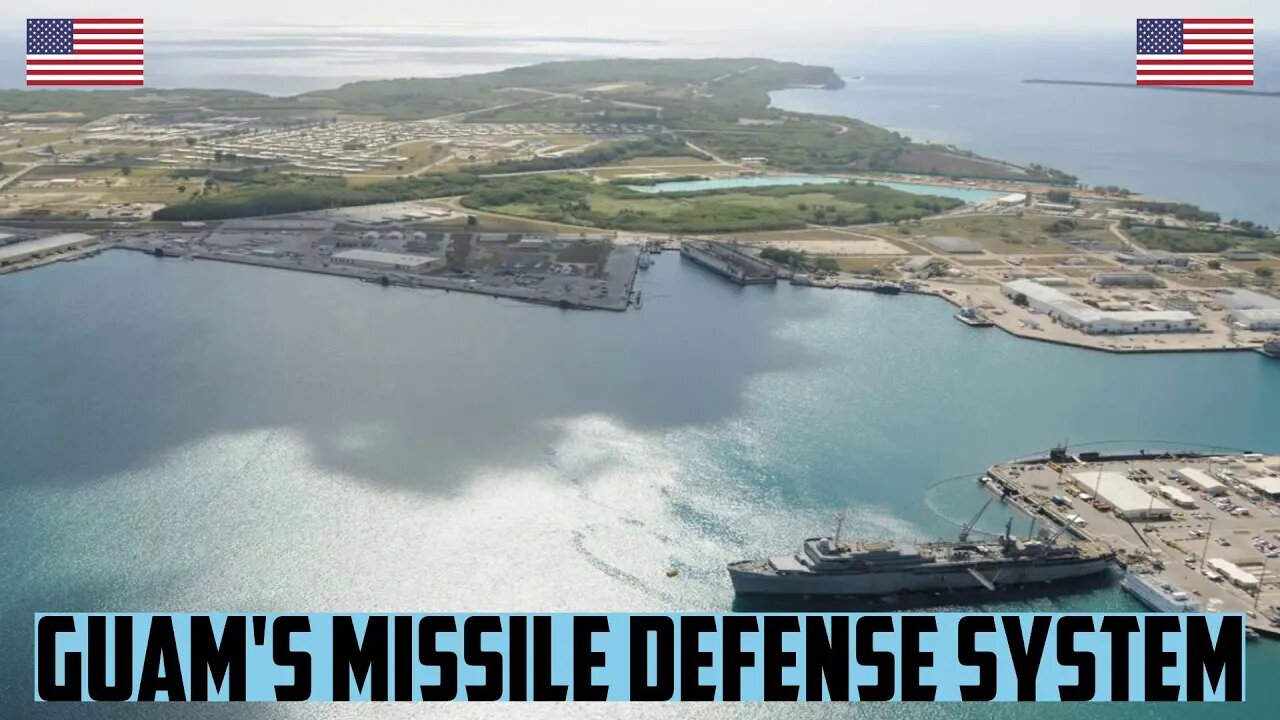Premium Only Content

A Race Against Time to Protect Against Hypersonic Threats #hypersonicmissile #guam
Connect with us on Facebook: https://www.facebook.com/profile.php?id=100087951995959
Twitter: https://twitter.com/shieldwall_d
Chapters:
Guam's Missile Defense System - 0:00
A New Shield for Guam - 0:38
The Looming Threat and the Need for Action - 2:06
Conclusion - 3:10
The island of Guam, known as the US military's "tip of the spear" in the Indo-Pacific, finds itself in an increasingly tense geopolitical climate, faced with mounting missile threats from potential adversaries. As a protective measure, the Guam Enhanced Integrated Air and Missile Defense System is on the horizon, promising a comprehensive, persistent, and 360-degree defense against all types of missile threats, including hypersonic ones. However, the project's slow pace of development and its later than ideal deployment date have stirred concerns amongst missile defense experts.
A New Shield for Guam.
The Enhanced Integrated Air and Missile Defense System represents a significant joint effort between multiple Defense Department agencies. Its design promises a defense shield for the US island territory, complete with the ability to neutralize ballistic, cruise, and hypersonic missiles. The project cost remains undisclosed, but a Pentagon request for $1.5 billion for Guam's defense against China's missile threats suggests the magnitude of the undertaking. It is set to incorporate the Army’s Integrated Air and Missile Defense Battle Command System and the Navy’s Aegis Combat System, with the latter currently deployed on Arleigh-Burke class guided-missile destroyers. However, the Aegis system, while effective in its own right, is limited in its ability to intercept hypersonic missiles during a narrow window in the final phase of flight. Thus, the imminent deployment of the Aegis systems, although necessary, only represents an immediate solution to Guam's security needs. Hypersonic missiles, capable of speeds exceeding Mach 5, pose a formidable challenge. With the ability to have predictable or maneuverable flight paths, coupled with their high speed and low altitude trajectories, these weapons are extremely difficult to detect and counter. To face this threat, the Defense Department is developing a new "glide phase interceptor," intended to intercept hypersonic missiles during the longest portion of their flight, giving a much larger window for successful interception. But, this technology is not expected to be available until the early 2030s, posing a significant delay to Guam’s defense system upgrade.
The Looming Threat and the Need for Action.
Time is a luxury that the island of Guam cannot afford. In the eyes of experts like Tom Karako, a missile defense analyst at the Center for Strategic and International Studies, the United States needs this technology "this decade". This urgency stems from the unpredictable nature of the threats faced by the island, particularly those from China. Riki Ellison, the founder of the Missile Defense Advocacy Alliance, points out that Guam's defense is currently limited to "what works today". While waiting for the latest technology might seem like the ideal course, it could mean leaving the island exposed for too long. This becomes an even more pressing issue when considering the potential for conflict escalation involving China and Taiwan. Guam, home to major military installations such as Naval Base Guam, Andersen Air Force Base, and the new Marine Corps Base Camp Blaz, is of strategic importance to the US due to its proximity to the South China Sea, North Korea, and China. While the island already has some defense capabilities, like the Terminal High Altitude Area Defense (THAAD) system, the need for comprehensive missile defense is clear.
====================================
#shieldwall #shieldwalldefense
We appreciate all of our viewers and supporters. Thank you.
====================================
Fair use is the right to use a copyrighted work under certain conditions without permission of the copyright owner. The doctrine helps prevent a rigid application of copyright law that would stifle the very creativity the law is designed to foster. It allows one to use and build upon prior works in a manner that does not unfairly deprive prior copyright owners of the right to control and benefit from their works. Together with other features of copyright law like the idea/expression dichotomy discussed above, fair use reconciles the copyright statute with the First Amendment.
====================================
-
 29:39
29:39
Afshin Rattansi's Going Underground
20 hours agoProf. Jeffrey Sachs: Will The Trump-Putin Meeting End the Ukraine Proxy War and Avert Nuclear War?
9.62K35 -
 9:48:25
9:48:25
Rallied
13 hours ago $18.27 earnedWarzone Solo Challenges All Day w/ Ral
95.4K6 -
![Aug Day #10 of RCP 🤟 [FR/ENG] 🫶 Some Fortnite then Demos then continue on StarRupture 🫶 🤟](https://1a-1791.com/video/fww1/81/s8/1/O/0/c/-/O0c-y.0kob-small-Aug-Day-10-of-RCP-FRENG-Som.jpg) 4:24:45
4:24:45
Deaf Gamer Girl
11 hours agoAug Day #10 of RCP 🤟 [FR/ENG] 🫶 Some Fortnite then Demos then continue on StarRupture 🫶 🤟
48K2 -
 6:59:09
6:59:09
Reidboyy
15 hours ago $11.55 earnedBattlefield 6 #1 POV (Watch and Learn)
91.8K3 -
 2:25:42
2:25:42
TheSaltyCracker
10 hours agoThey So Mad ReEEeStream 8-10-25
124K278 -
 2:27:39
2:27:39
vivafrei
19 hours agoEp. 276: Epstein Subpoenas &Trump E.O! Bondi Offers Reward for Maduro Arrest? MADNESS IN CANADA!
145K137 -
 2:23:55
2:23:55
Barry Cunningham
13 hours agoPRESIDENT TRUMP IS NOT PLAYING AROUND...AND THE LIBNUTS CAN'T STOP HIM!
100K64 -
 22:02
22:02
Stephen Gardner
19 hours ago🔥JUST IN: Trump BETRAYAL plot EXPOSED!
121K308 -
 38:32
38:32
The Why Files
21 days agoThe Real CIA Vol. 1: 693 Pages of Secret Crimes
133K61 -
 49:12
49:12
MattMorseTV
16 hours ago $22.72 earned🔴Zelenskyy is NOT HAPPY about Trump’s NEW DEAL.🔴
128K158